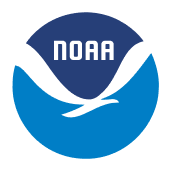GSL projects in the HFIP Real-Time Experiment – 2021
Each hurricane season brings the opportunity to demonstrate advances that improve weather model accuracy. The Hurricane Forecast Improvement Project (HFIP) real-time Experiments (HREx) starts officially on August 1 and ends on October 31. Real-time model products are evaluated after each season to identify techniques that appear particularly promising to operational forecasters and/or modelers. These potential advances are then blended into future model upgrades, or further developed outside of operations with subsequent testing.
During the 2021 hurricane season, GSL is testing three alternate physical parameterizations in the Unified Forecast System (UFS). These parameterization schemes are important because they strongly influence model forecasts. Since physical processes are extremely complex and cannot be fully represented in current models, parameterizations are necessary to infer the effects of the physical processes given the limited information available. The schemes being tested involve key components of the model including a convective parameterization, a boundary layer parameterization, and a microphysics scheme. They are candidates for transition to operations as part of the upcoming UFS Rapid Refresh Forecast System (RRFS), and may also be considered for future implementations of the Global Forecast System (GFS)/Global Ensemble Forecast System (GEFS). The models are run on High-Performance Computing systems managed by GSL.

This work helps transition the latest advances to the UFS-based operational models and serves as a prime example of successful community-driven R2O efforts for the broader UFS community. The Developmental Testbed Center (with NCAR and GSL staff) plays a significant role in this process as it supports the transition of innovative research and development in hurricane models to the authoritative code base that is used for these experiments.
The experimental products from these runs are available through the HFIP website and through the AOML Hurricane Viewer website. HFIP HREx is led jointly by developers at NWS/NCEP and OAR/AOML.
Our Mission
Lead research and directed development through the transition of environmental data, models, products, tools, and services to support commerce, protect life and property, and promote a scientifically literate public.
Research Areas
Organizational Excellence, Earth System Prediction, Advanced Technologies, and Decision Support are the foundation to achieving the GSL Grand Challenge: Deliver actionable global storm-scale prediction and environmental information through advanced technologies to serve society.
Global Systems Laboratory

